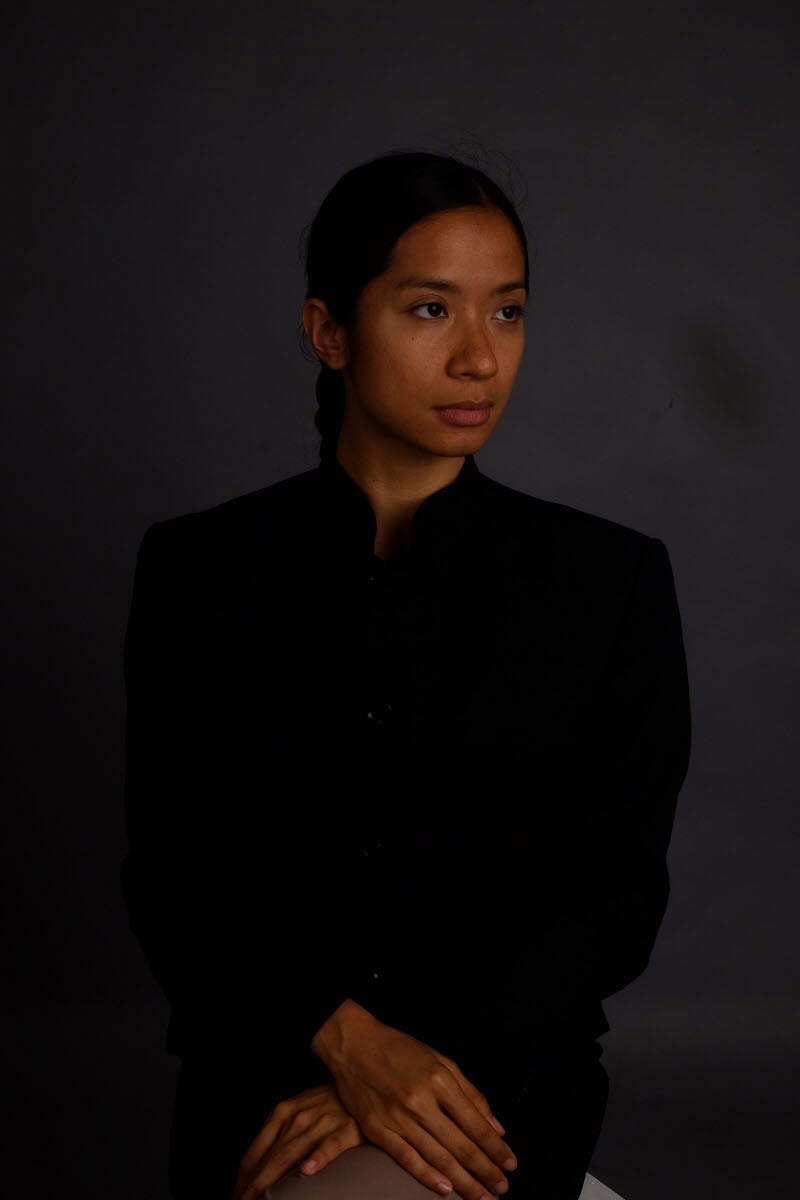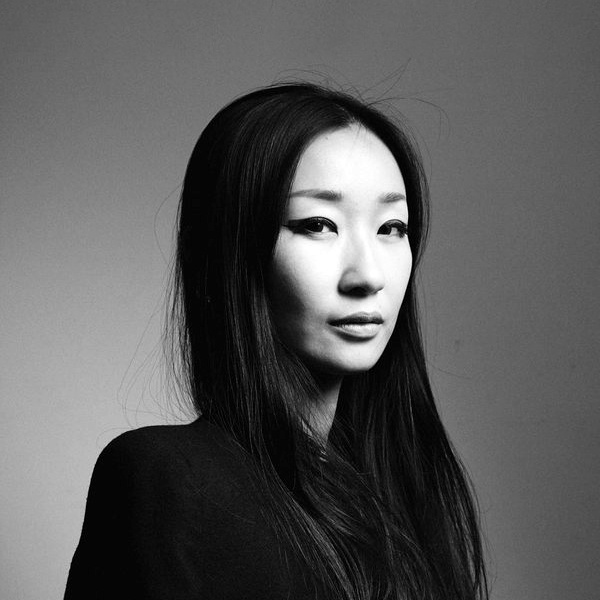Past Exhibition
Korean
Eisa Jocson
b.1986- Philippine
Eisa Jocson is a contemporary choreographer and dancer from the Philippines, trained as a visual artist, with a background in ballet. She has been commissioned by and toured extensively in major contemporary festival with her solo triptych: Death of the Pole Dancer (2011), Macho Dancer (2013) and Host (2015). Macho Dancer won the prestigious Zurcher Kantonalbank Acknowledgement Prize at the Zurich Theater Spektakel in 2013.
She was commissioned by Sharjah Biennale 2019 to produce The Filipino Superwoman Band, a work on the affective labor of Overseas Filipino Musicians. New iterations of the work have been commissioned and exhibited widely; SuperWoman KTV Video Installation (2019) and PASYOKE (2020). TFSB2020: Superwoman, Empire Of Care a video work won the 2021 SeMa-HANA Award at the Seoul MediaCity Biennale. A recipient of the 2018 Cultural Centre of the Philippines 13 Artists Award, she won the Hugo Boss Asia Art Award in 2019.
She was commissioned by Sharjah Biennale 2019 to produce The Filipino Superwoman Band, a work on the affective labor of Overseas Filipino Musicians. New iterations of the work have been commissioned and exhibited widely; SuperWoman KTV Video Installation (2019) and PASYOKE (2020). TFSB2020: Superwoman, Empire Of Care a video work won the 2021 SeMa-HANA Award at the Seoul MediaCity Biennale. A recipient of the 2018 Cultural Centre of the Philippines 13 Artists Award, she won the Hugo Boss Asia Art Award in 2019.

Han Yajuan
b.1980- China
Han Yajuan is a multimedia artist. Her work focuses on the relationship between women and the virtual space in relation to agency and identity issues. Her artistic practices operate across paintings, moving images, installations, VR, and GameArt.
Han has held solo exhibitions in China, the United States, the United Kingdom, Italy, Holland, Japan, Korea, Australia, Singapore, and Spain. Her works also have been exhibited in museums, art institutions, and biennials worldwide. For example, the National Art Museum of China, the National Museum of Contemporary Art Korea, Wereld Museum Rotterdam, the National Portrait Gallery Australia, Palazzo Reale Milano, Marino Marini Museum, La Centrale Electrique Brussels, Palazzo delle Arti Naples, Museum of Contemporary Art Shanghai, Bienal de Curitiba 2017, and Animamix Biennial 2009 and 2014. Her works have been collected by the China Academy of Art, Swiss BSI Foundation, and M+ Museum.
Han received her Bachelor of Arts from the China Academy of Art and her Master of fine arts from the Central Academy of Fine Arts. She is pursuing a PhD in Art and Computational Technology at Goldsmiths, University of London.
Han has held solo exhibitions in China, the United States, the United Kingdom, Italy, Holland, Japan, Korea, Australia, Singapore, and Spain. Her works also have been exhibited in museums, art institutions, and biennials worldwide. For example, the National Art Museum of China, the National Museum of Contemporary Art Korea, Wereld Museum Rotterdam, the National Portrait Gallery Australia, Palazzo Reale Milano, Marino Marini Museum, La Centrale Electrique Brussels, Palazzo delle Arti Naples, Museum of Contemporary Art Shanghai, Bienal de Curitiba 2017, and Animamix Biennial 2009 and 2014. Her works have been collected by the China Academy of Art, Swiss BSI Foundation, and M+ Museum.
Han received her Bachelor of Arts from the China Academy of Art and her Master of fine arts from the Central Academy of Fine Arts. She is pursuing a PhD in Art and Computational Technology at Goldsmiths, University of London.

Jung Jongmee
b.1957- Korea
Born in 1957 in Korea, Jung Jongmee has gained widespread recognition for her extraordinary talent in working with hanji, the traditional Korean paper made from mulberry trees, and for her artistic portrayal of women. Growing up in a conservative environment in Daegu, she developed a deep fascination with the women who played significant roles in her life. By closely observing her mother, grandmother, and other female figures, she cultivated a profound empathy and understanding for their experiences.
Jung Jongmee firmly believed in the untapped potential of women and their innate ability to contribute harmoniously alongside men. Motivated by this belief, she channeled her artistic expression into depicting women using hanji, a material that perfectly encapsulated the qualities she associated with Korean women - a remarkable blend of resilience and tenderness. The traditional Korean paper possessed a unique combination of durability and softness, mirroring the characteristics she admired in the women around her.
Until 2021, Jung Jongmee held the esteemed position of Professor at the Department of Fine Art in Korea University. Her remarkable artistic contributions have been acknowledged with prestigious awards, including the Lee Insung Award in 2012 and the Lee Jungseob Award in 2001. Notably, her works have been sought after by esteemed institutions such as the National Museum of Modern and Contemporary Art, Seoul Museum of Art, Korea University Museum, and Seoul National University, where they are proudly showcased in their collections.
Jung Jongmee firmly believed in the untapped potential of women and their innate ability to contribute harmoniously alongside men. Motivated by this belief, she channeled her artistic expression into depicting women using hanji, a material that perfectly encapsulated the qualities she associated with Korean women - a remarkable blend of resilience and tenderness. The traditional Korean paper possessed a unique combination of durability and softness, mirroring the characteristics she admired in the women around her.
Until 2021, Jung Jongmee held the esteemed position of Professor at the Department of Fine Art in Korea University. Her remarkable artistic contributions have been acknowledged with prestigious awards, including the Lee Insung Award in 2012 and the Lee Jungseob Award in 2001. Notably, her works have been sought after by esteemed institutions such as the National Museum of Modern and Contemporary Art, Seoul Museum of Art, Korea University Museum, and Seoul National University, where they are proudly showcased in their collections.

Lee Hyun-Joung
b.1972- Korea
Lee Hyun-Joung (b.1972- Korea) is a visionary artist whose work reflects her unique blend of childhood memories in South Korea. Utilizing the hand-made paper Hanji, made from the inner bark of Mulberry trees, known for its strength and versatility, Lee's work stands at the crossroads of Korean culture and fine art. A master of the Hanji-making process, Lee creates each piece of paper herself. The slow and mindful process of crafting the hand-made paper from the inner bark of Mulberry trees is like meditation to Lee. The piece slowly comes to mind as she shreds the fibers, allowing the process to speak to her and guide the creation of each work of art. Her method of art-making involves letting the natural relief of the Hanji paper appear, rather than flattening it. With her brush, she creates patterns of lines that both emphasize and impede the paper's embossed design, resulting in an ethereal, dream-like quality to her work. Her pieces are as contemplative as her practice, portraying heaving mounds and supple ridges that are reminiscent of the textures of mountains and other land formations.
In 2017, Lee has won the Taylor Prize at Art Capital - Grand palais Paris. She had group exhibitions include Salon d'Automne Paris, Art Capital, Beyond Borders Art Exhibition Hong Kong and International Paper Art Biennale in Shanghai, China. She also had solo exhibitions globally include Galerie Plexus Swiss, Foundation Taylor Paris and Gallerie Sept Brussels.
In 2017, Lee has won the Taylor Prize at Art Capital - Grand palais Paris. She had group exhibitions include Salon d'Automne Paris, Art Capital, Beyond Borders Art Exhibition Hong Kong and International Paper Art Biennale in Shanghai, China. She also had solo exhibitions globally include Galerie Plexus Swiss, Foundation Taylor Paris and Gallerie Sept Brussels.

Ai Kijima
b.1970- Japan
Ai Kijima(b.1970- Japan) is a renowned artist born in Tokyo in 1970, whose work revolves around the use of quilting and fabric. Her art lies at the intersection of labor and gender and challenges the traditional notions of women's work and opportunities available to them. Her work reflects her desire for a personalized and eclectic identity, and she skillfully blends traditional techniques with contemporary themes.
Kijima's chaotic collages are made by stitching together found materials into evocative cross-cultural patchworks. Her expertise in textiles developed over the last 30 years as she lived as an immigrant in the United States and as an expat in Istanbul, Turkey for over four years. Kijima is a master quilter and full-time professional artist, with a bachelor's and master's degree in Fiber and Material Studies from the School of the Art Institute of Chicago. Her works have been exhibited in numerous solo and group exhibitions across the United States, Canada, Austria, Germany, Spain, China and South Korea.
Kijima's love for sewing and knotting was instilled in her from a young age by her grandmother. Her studio in New York is furnished with Ikea shelves filled with diverse and carefully folded textiles, waiting to be joined in stringent stories. Her works incorporate bedding, vintage kimonos, t-shirts, drapes and kitchen towels, which she purchases at flea markets or second-hand stores. Despite criticism that her works are too domestic, Kijima understands the deep value of handcrafting and homemaking and sees it as a way to craft her own identity.
Kijima's chaotic collages are made by stitching together found materials into evocative cross-cultural patchworks. Her expertise in textiles developed over the last 30 years as she lived as an immigrant in the United States and as an expat in Istanbul, Turkey for over four years. Kijima is a master quilter and full-time professional artist, with a bachelor's and master's degree in Fiber and Material Studies from the School of the Art Institute of Chicago. Her works have been exhibited in numerous solo and group exhibitions across the United States, Canada, Austria, Germany, Spain, China and South Korea.
Kijima's love for sewing and knotting was instilled in her from a young age by her grandmother. Her studio in New York is furnished with Ikea shelves filled with diverse and carefully folded textiles, waiting to be joined in stringent stories. Her works incorporate bedding, vintage kimonos, t-shirts, drapes and kitchen towels, which she purchases at flea markets or second-hand stores. Despite criticism that her works are too domestic, Kijima understands the deep value of handcrafting and homemaking and sees it as a way to craft her own identity.
